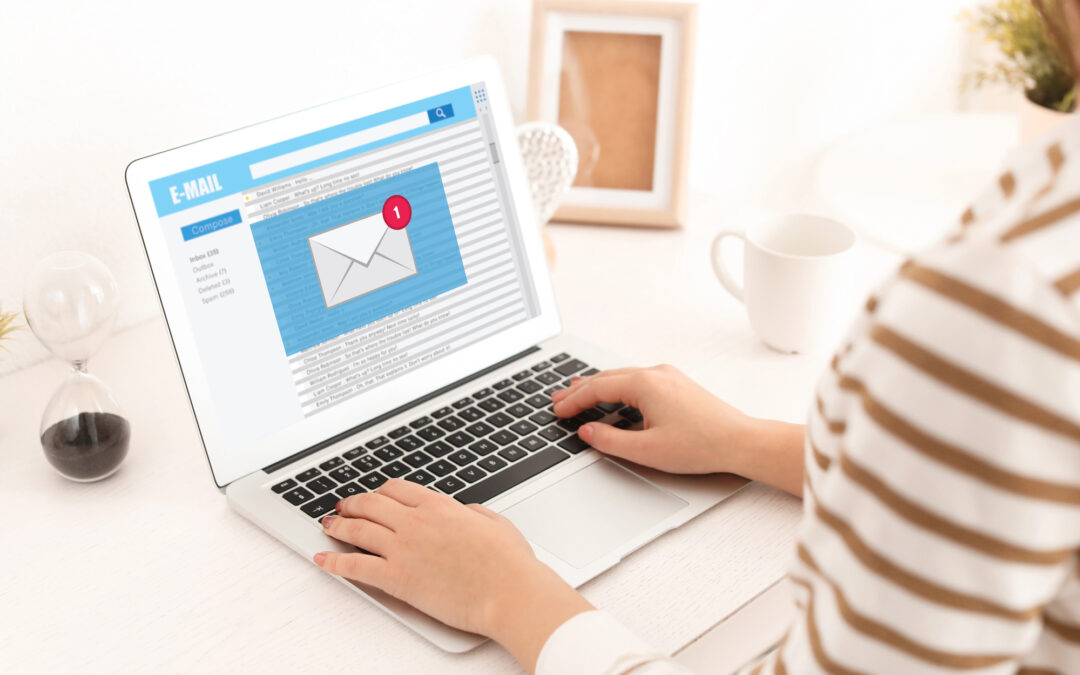Fall 2025 has brought new pressure on email deliverability. Google, Yahoo, and Microsoft have all tightened standards that determine whether messages reach the inbox or get filtered out before a subscriber ever sees them. The changes are not always obvious, but the effects are already visible in declining inbox placement for companies that do not prioritize list hygiene and engagement.
For businesses that rely on email nurturing, a healthy sender reputation is now the deciding factor in visibility, performance, and long-term revenue. Here is what has changed, what inbox providers care about, and how CRMs are adapting behind the scenes.
What’s New Since Last Quarter
New This Fall 2025:
- Microsoft has joined Google and Yahoo on deliverability standards
- Gmail now flags unauthenticated bulk mail in mobile view with a red warning badge.
- Yahoo and AOL expanded the definition of “bulk sender” to 1,000 emails per day.
- Microsoft is testing “trusted sender tiers” based on DKIM alignment and engagement.
Inbox Provider Priorities this Quarter
| Provider | Authentication Requirements | Engagement Weight |
| SPF, DKIM, DMARC required | Very High | |
| Yahoo/AOL | Full Alignment Required | Very High |
| Microsoft | DMARC required for all | Very High |
What Builds or Breaks Sender Reputation
Inbox providers evaluate both the sender and the email itself every time a message attempts to enter an inbox.
Key factors include:
Domain and IP Reputation
Emails must come from a trustworthy domain. Poor past behavior by any sender on a shared IP can reduce deliverability for everyone using it.
Authentication Requirements
SPF, DKIM, and DMARC are now considered basic. Without proper authentication and alignment, messages are treated as high risk.
Sending Patterns and Volume
Consistent email volume looks legitimate. Surges and irregular sending look like spam campaigns.
Engagement Signals
Real subscriber behavior now drives inbox decisions:
- Opens and clicks
- Replies
- Moving mail out of spam
- Spam complaints
- Skipping or deleting messages without engagement
Positive engagement builds trust. Repeated silence damages it.
List Quality
High bounce rates, outdated contacts, or spam trap hits signal poor data hygiene.
Content Safety and Relevance
Sloppy HTML, mismatched branding, excessive images, shady links, or risky attachments trigger filtering.
Inbox providers judge one thing above all else:
Would this subscriber want to receive email from this sender again?
Deliverability Shifts in 2024 and 2025
Several developments have reshaped sender expectations:
New Bulk Sender Requirements
Google, Yahoo, and Microsoft now enforce stricter identity, security, and unsubscribe standards for any brand sending large volumes of mail.
Volume Without Engagement is a Liability
Large senders with low engagement have seen steep drops in inbox placement. Mid sized senders who maintain healthy engagement are now performing better.
Increased Filtering for Yahoo and AOL
Many senders experienced dramatic declines in open rates due to inbox placement changes rather than fewer sends.
Privacy Changes Reduce Tracking Accuracy
Apple Mail Privacy Protection and similar tools reduce the reliability of open tracking. Inbox providers compensate by watching for deeper engagement signals such as clicks and replies.
How CRMs Are Responding to Unengaged Contacts
CRMs do not want their shared sending infrastructure damaged by risky behavior. To protect their own reputation, they increasingly suppress unengaged contacts behind the scenes even when their public policies are vague.
Here is the current landscape:
Many CRMs:
- Uses automatic status changes
- Unengaged contacts become non marketable over time
- Marketing email is restricted while transactional messages remain allowed
- The exact timeline is evolving and is not always clearly documented
- Internal enforcement protects platform wide sending reputation
- Provide tools to identify and suppress unengaged contacts
- Strong recommendations for automations to maintain list hygiene
The real theme
CRMs will interfere if a sender becomes a risk. They may:
- Block marketing sends
- Limit volume
- Trigger additional verification
- Reduce delivery priority
They do this quietly. The platform must protect its IP reputation even if the user has not set their own policy.
Best Practices for the Modern Nurture Strategy
Brands that succeed with email now focus on active audience growth, not total contact count.
Here is what to implement:
- Verify SPF, DKIM, and DMARC on every sending domain.
- Track and suppress unengaged contacts using clear internal rules.
- Run re engagement campaigns before suppression.
- Maintain consistent sending patterns.
- Use segmentation to keep content aligned with subscriber interests.
- Remove invalid and bouncing contacts regularly.
- Report on inbox placement and active audience size, not just opens.
Deliverability is no longer just a technical detail. It is a strategic advantage.
Final Takeaway
The inbox has become more selective. Every email you send impacts your reputation and the reputation of your CRM. High quality nurturing is rewarded. Unchecked blast sending is punished.
If you prioritize:
- Authentication
- Engagement
- Suppression of unengaged contacts
Your emails continue to land in the inbox where they belong. If not, platforms and inbox providers will eventually make the decision for you.
The future of email marketing belongs to senders who play the long game: protect the reputation, respect the subscriber, and nurture the audience that truly wants to hear from you.
2026 Expectations
Expect inbox providers to introduce “Authenticated Brand Trust Scores,” combining BIMI, engagement, and complaint metrics. Early adoption will separate legitimate marketers from mass senders.


Recent Comments